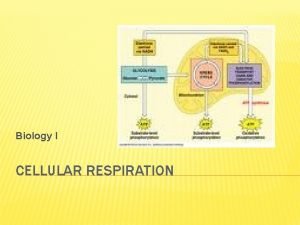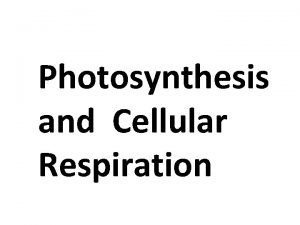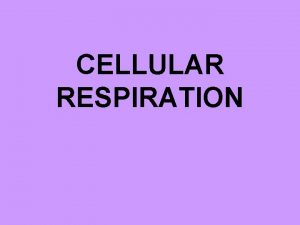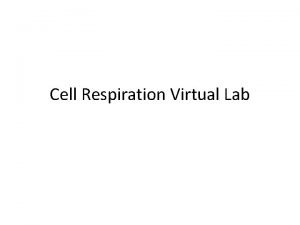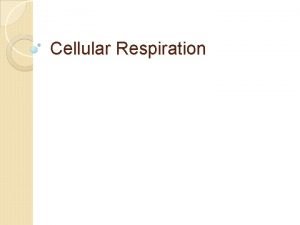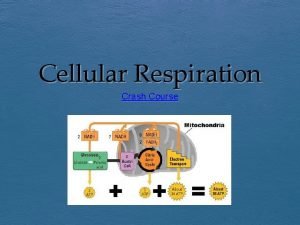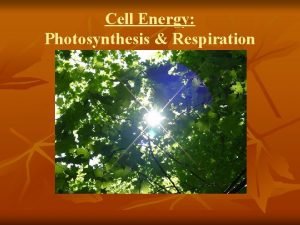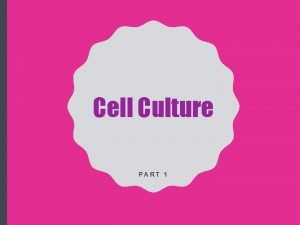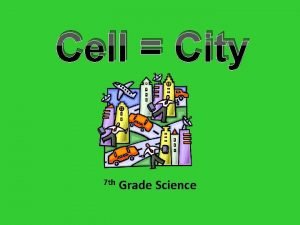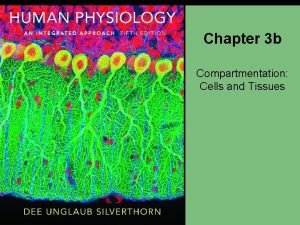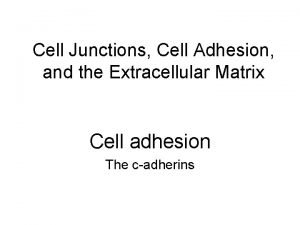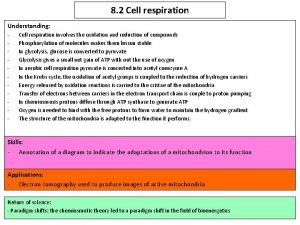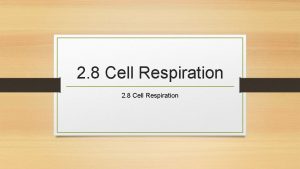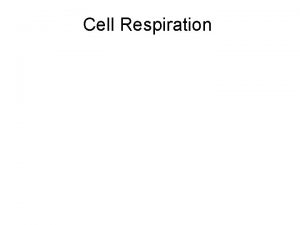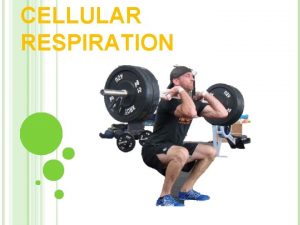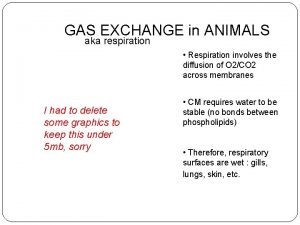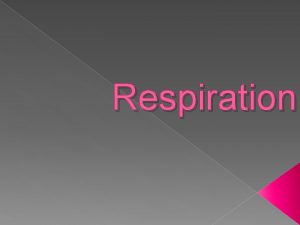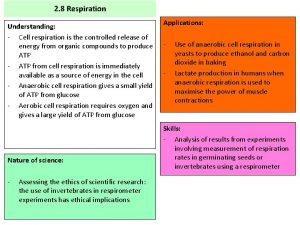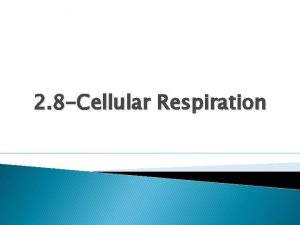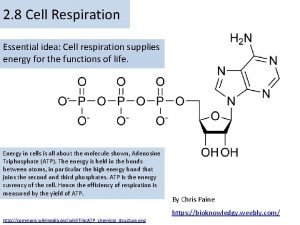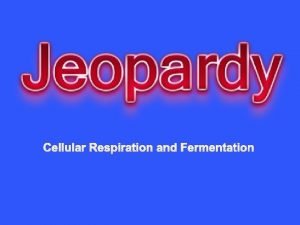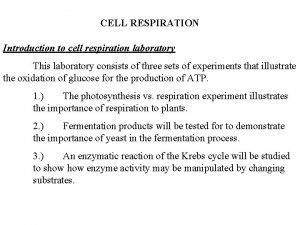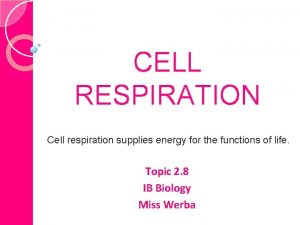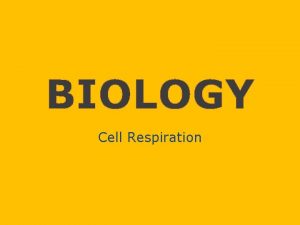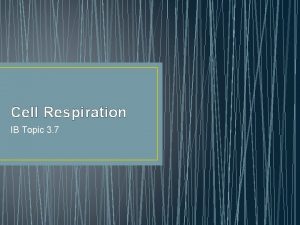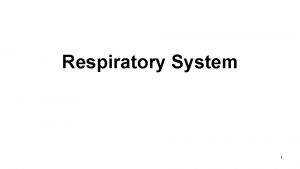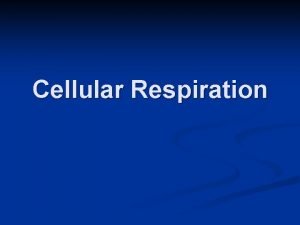8 2 Cell respiration Understanding Cell respiration involves

































- Slides: 33

8. 2 Cell respiration Understanding: - Cell respiration involves the oxidation and reduction of compounds - Phosphorylation of molecules makes them lesson stable - In glycolysis, glucose is converted to pyruvate - Glycolysis gives a small net gain of ATP with out the use of oxygen - In aerobic cell respiration pyruvate is concerted into acetyl coenzyme A - In the Krebs cycle, the oxidation of acetyl groups is coupled to the reduction of hydrogen carriers - Energy released by oxidation reactions is carried to the cristae of the mitochondria - Transfer of electrons between carriers in the electron transport chain is couple to proton pumping - In chemiosmosis protons diffuse through ATP synthase to generate ATP - Oxygen is needed to bind with the free protons to form water to maintain the hydrogen gradient - The structure of the mitochondria is adapted to the function it performs. Skills: - Annotation of a diagram to indicate the adaptations of a mitochondrion to its function Applications: - Electron tomography used to produce images of active mitochondria Nature of science: - Paradigm shifts: the chemiosmotic theory led to a paradigm shift in the field of bioenergetics

Draw a mitochondrion Inner membrane Outer membrane Cristae Matrix Inter membrane space What is the role of each part? Skills: - Annotation of a diagram to indicate the adaptations of a mitochondrion to its function

Mitochondrion Drawing Skills: - Annotation of a diagram to indicate the adaptations of a mitochondrion to its function

Mitochondrion Functions Inner membrane – Electron transport chain and ATP synthase Outer membrane – Creates a cellular compartment with ideal conditions for aerobic respiration Cristae – projections of inner membrane which increase surface area for oxidative phosphorylation Matrix – Contains enzymes for Krebs cycle and link reaction Inter membrane space - Protons pumped into space by electron transport chain. Small space means concentration builds up quickly Understanding: - The structure of the mitochondria is adapted to the function it performs.

Electron Tomography Uses a transmission electron microscope 3 D image of mitochondria Allowed clear observations: - Cristae are not just in foldings but are defining micro-compartments in the organelle - Cristae are flexible and dynamic – change depending on the metabolism and other stimuli - Specific proteins/lipids that actively regulate the inner membrane Applications: Electron tomography used to produce images of active mitochondria

Oxidation and Reduction Always occur together Involve transferring electrons from one thing to another Oxidation = loss of electrons (gain of oxygen) Reduction = gain of electrons (loss of oxygen) For something to gain an electron, something has to lose one Electron carriers accept or give up electrons as required – linking oxidation and reduction in cells. Understanding: - Cell respiration involves the oxidation and reduction of compounds

Oxidation and Reduction Understanding: - Cell respiration involves the oxidation and reduction of compounds

NAD Main electron carrier in respiration (Nicotinamide adenine dinucleotide) Initially has a positive charge and exists normally as NAD+ Understanding: - Cell respiration involves the oxidation and reduction of compounds

Reducing NAD 1. 2. 3. 4. Two hydrogen atoms removed from substance The first hydrogen is split into a proton and an electron NAD+ accepts the electron, and the proton (H+) is released NAD accepts the proton and electron of the second hydrogen atom NAD+ + 2 H NADH + H+ Oxidation can therefore be achieved by losing these Hydrogen atoms again (as NAD loses the electrons) Understanding: - Cell respiration involves the oxidation and reduction of compounds

Oxidation and reduction – describe what is happening below:

Phosphorylation Addition of a phosphate molecule Make a molecule less stable – so more likely to react Reduces the activation energy required for reactions that follow – more likely to occur Understanding: - Phosphorylation of molecules makes them lesson stable

Phosphorylation Key area = production of ATP (ADP ATP) Understanding: - Phosphorylation of molecules makes them lesson stable

Phosphorylation Substrate level: ATP produced via transport of a phosphate directly to ADP Oxidative: ATP produced by reduction/oxidation reactions in an electron transport chain Understanding: - Phosphorylation of molecules makes them lesson stable

Respiration Step 1: Mitochondria Step 2: Steps in respiration 1. 2. Step 3: 3. 4. 5. Step 4 & 5:

Respiration 1. Glycolysis 2. Link Reaction 3. Krebs cycle 4. Electron transport chain 5. Chemiosmosis

Glycolysis Glucose converted into pyruvate In the cytoplasm of the cell (outside of mitochondrion) Not a single step process – example of a metabolic pathway 1 glucose = 2 pyruvate Reduced NAD made (has gained electrons) Substrate phosphorylation – overall 2 ATP produced Understanding: In glycolysis, glucose is converted to pyruvate Glycolysis gives a small net gain of ATP with out the use of oxygen In aerobic cell respiration pyruvate is concerted into acetyl coenzyme A


Glycolysis 1. 2 ATP used to phosphorylate one molecule of glucose 2. Fructose diphosphate split to form two molecules of triose phosphate 3. Each is then oxidised to glycerate-3 -phosphate 4. Hydrogen is accepted by NAD+ to make NADH + H+ 5. Phosphate group transferred to ADP to produce 2 ATP molecules and pyruvate molecule Understanding: In glycolysis, glucose is converted to pyruvate Glycolysis gives a small net gain of ATP with out the use of oxygen

Outline the process of Glycolysis (5 marks)

Outline the process of Glycolysis (5 marks) 1. 2. 3. 4. Occurs in the cytoplasm Glucose is phosphorylated using ATP Split (lysis) into two triose phosphates Oxidation of triose phosphates (to produce glycerate-3 -phosphate) 5. NAD reduced to NADH (+H+) 6. Net gain of two ATP molecules/two ATP use and four ATP produced 7. Pyruvate at the end of glycolysis

The Link Reaction Two molecules of pyruvate produced in glycolysis per molecule of glucose. If oxygen is present (AEROBIC) – pyruvate absorbed into mitochondria where it is oxidised (lose electrons) and decarboxylated to form an acetyl group. NADH is formed (Decarboxylated = take away carboxyl group and forms CO 2) Acetyl group then joined to coenzyme A to make acetyl coenzyme A Understanding: In aerobic cell respiration pyruvate is concerted into acetyl coenzyme A

The Link Reaction Link reaction as it links glycolysis with the Krebs cycle

The Krebs Cycle 1. Acetyl Co. A from link reaction combines with a 4 carbon compound, making a 6 carbon compound. 2. This is oxidized and decarboxylated to form a 5 carbon compound. Carbon is released and combines with oxygen to form carbon dioxide. NAD+ is reduced to NADH Understanding: In the Krebs cycle, the oxidation of acetyl groups is coupled to the reduction of hydrogen carriers Energy released by oxidation reactions is carried to the cristae of the mitochondria

The Krebs Cycle 3. The 5 carbon compound is oxidized and decarboxylated to form a 4 carbon compound. This forms carbon dioxide and another NADH 4. The 4 carbon compound undergoes various changes resulting in more products: - FAD to FADH - NAD to NADH - ADP to ATP Understanding: In the Krebs cycle, the oxidation of acetyl groups is coupled to the reduction of hydrogen carriers Energy released by oxidation reactions is carried to the cristae of the mitochondria

The Krebs Cycle Must spin twice for each glucose molecule as two pyruvates are formed in glycolysis. Every 1 glucose molecule (2 spins) produces: - 6 NADH (oxidation) - 4 CO 2 (decarboxylation) - 2 FADH (oxidation) - 2 ATP (reduced) Substrate phosphorylation – ATP produced NADH and FADH transport accepted electrons to the electron transport chain Understanding: - In the Krebs cycle, the oxidation of acetyl groups is coupled to the reduction of hydrogen carriers - Energy released by oxidation reactions is carried to the cristae of the mitochondria

The Krebs Cycle By the end of the Krebs cycle, only 4 ATPs have been gained. - 4 from glycolysis (but 2 used up in the process) - 2 from Krebs cycle All substrate level phosphorylation Total of 36 ATPs gained overall from 1 glucose molecule. (32 produced in the Electron transport chain and chemiosmosis) Understanding: - In the Krebs cycle, the oxidation of acetyl groups is coupled to the reduction of hydrogen carriers - Energy released by oxidation reactions is carried to the cristae of the mitochondria

Electron Transport Chain Series of small steps, carried out by a chain of electron carriers. Electrons passed from carrier to carrier, energy is used to transfer protons from matrix to inter membrane space. Understanding: Transfer of electrons between carriers in the electron transport chain is couple to proton pumping In chemiosmosis protons diffuse through ATP synthase to generate ATP Oxygen is needed to bind with the free protons to form water to maintain the hydrogen gradient

Chemiosmosis Happens in inter membrane space H+ moves across a membrane down a concentration gradient ATP synthase uses the energy to create ATP (oxidative phosphorylation) Understanding: Transfer of electrons between carriers in the electron transport chain is couple to proton pumping In chemiosmosis protons diffuse through ATP synthase to generate ATP


Electron Transport Chain and Chemiosmosis 1. 2. 3. 4. 5. 6. 7. 8. 9. Reduced NAD and FAD supplies H atoms to first carrier in the chain H atoms split and release 2 electrons, which pass from carrier to carrier ATP released as electrons pass down More electrons supplied from reduced FAD ATP used to transfer protons (H+) across inner mitochondrial membrane Concentration gradient of protons (H+) builds up Creates a store of energy Protons pass back from the inter membrane space to the matrix through ATP synthase makes ATP This is oxidative phosphorylation (use of electron transport chain)

Oxygen At the end of the electron transport chain oxygen is the final electron acceptor Oxygen molecule is reduced (gains electrons) Accepts electrons and forms a covalent bond with hydrogen to make water – diffuses out of cell as waste (urine/perspiration/water vapour in breath) By using up hydrogen the proton gradient across the inner membrane is maintained Chemiosmosis can continue Understanding: Oxygen is needed to bind with the free protons to form water to maintain the hydrogen gradient

Create a respiration diagram Use a piece of A 3/A 4 paper Create a respiration diagram – go step by step from the start. Include: - Glycolysis Link reaction Krebs cycle Oxidative phosphorylation Electron transport chain Chemiosmosis - Where do they happen Is reduced NAD/FAD produced Is ATP produced What is made from that process What happens here Is it substrate level phosphorylation or oxidative phosphorylation

 External respiration
External respiration Intrapleural pressure
Intrapleural pressure Formula for celluar respiration
Formula for celluar respiration Formula for cellular respiration
Formula for cellular respiration Areobic respiration
Areobic respiration Chemical formula for cellular respiration
Chemical formula for cellular respiration Electrons carried in nadh diagram
Electrons carried in nadh diagram Lab 5 cell respiration
Lab 5 cell respiration What type of cell performs cellular respiration
What type of cell performs cellular respiration Cellular respiration virtual lab snails and elodea
Cellular respiration virtual lab snails and elodea Where in the cell does cellular respiration occur
Where in the cell does cellular respiration occur Where in the cell does cellular respiration occur
Where in the cell does cellular respiration occur Define respiration
Define respiration How do plants get glucose
How do plants get glucose Cell city analogy
Cell city analogy Difference between mercury cell and diaphragm cell
Difference between mercury cell and diaphragm cell Prokaryotic cell vs eukaryotic cell
Prokaryotic cell vs eukaryotic cell Prokaryotic cell and eukaryotic cell similarities
Prokaryotic cell and eukaryotic cell similarities Plant cell animal cell venn diagram
Plant cell animal cell venn diagram Lithium ion battery reaction equation
Lithium ion battery reaction equation Dry cell vs wet cell
Dry cell vs wet cell Plant vs animal cells venn diagram
Plant vs animal cells venn diagram Middle lamella
Middle lamella Plant cell and animal cell diagram
Plant cell and animal cell diagram Structure of animalcell
Structure of animalcell Cell wall vs cell membrane
Cell wall vs cell membrane 10 cm dish surface area
10 cm dish surface area Finite and continuous cell lines
Finite and continuous cell lines Cell city analogy answer key
Cell city analogy answer key Primary source batteries
Primary source batteries Differences between plant animal and bacterial cells
Differences between plant animal and bacterial cells Cell-cell junction
Cell-cell junction Cell-cell junction
Cell-cell junction What cell organelle is like lysol spray cleaning the cell
What cell organelle is like lysol spray cleaning the cell





